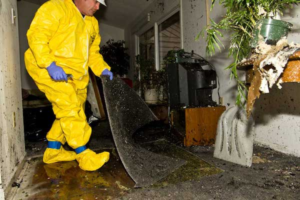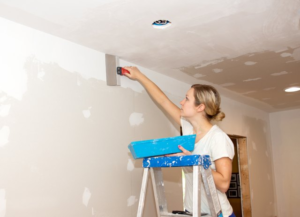Plumbers install and repair pipes, fixtures, and appliances. They read blueprints and building codes to understand how new systems work, and they collaborate with construction teams to make sure plumbing is integrated seamlessly into new buildings. Contact Gateway Plumbers of Aurora now!
They’re also the ones we call when there’s a leaky pipe or clogged drain. It’s a dirty job, but someone else has to do it!

Plumbers install, repair and maintain the pipes, fixtures and appliances that carry water and waste in residential, commercial and industrial settings. This work involves laying pipes, installing toilets, showers, baths and sinks, connecting appliances like dishwashers and washing machines, and more. It also includes inspecting existing systems to ensure they are safe and compliant with regulations. Plumbers use a wide range of tools to perform their duties, from basic hand tools to more advanced machinery. They must be comfortable working with power tools and be able to read blueprints and technical diagrams.
One of the most important skills plumbers need is problem-solving. They must be able to identify issues with pipes, fixtures and appliances and come up with effective solutions. This requires attention to detail, the ability to think critically and creatively, and strong communication skills. It also helps to have good physical stamina and manual dexterity, as plumbers often need to be able to bend and reach into tight spaces.
Plumbing is a trade that requires constant learning. As such, plumbers must be able to keep up with industry trends and advancements in order to provide their clients with the best possible service. This can be done through continuing education, attending seminars or conferences, or reading trade publications. It is also a good idea for plumbers to have strong customer service skills, as they may need to explain complex plumbing issues in simple terms and provide estimates for their work.
Because plumbers work with dangerous substances, they need to be able to follow strict safety guidelines. This includes wearing protective gear when handling hazardous materials, such as asbestos or lead, and following all relevant health and safety regulations. In addition, plumbers often need to work with contaminated water and waste, which can pose additional health risks. For example, they might need to clean up sewage leaks, which could contain infectious diseases like cholera, typhoid and hepatitis. They also face the risk of exposure to bacteria, such as those found in faeces and vomit, when repairing septic systems or sewer pipes.
Maintenance
Plumbing systems are complex networks of pipes, valves, fixtures, and other components that transport water, waste, and gases throughout residential and commercial buildings. Licensed plumbers install and repair these systems to ensure they function properly. They also inspect, test, and maintain plumbing equipment to ensure it meets health and safety standards.
Depending on the type of plumbing work they do, plumbers can encounter a variety of different environments. For example, residential plumbers often work in people’s homes and apartments, which means they may need to enter confined spaces like crawl spaces or basements. Additionally, they may need to interact with customers and explain their plumbing issues and repair options. Commercial plumbers, on the other hand, typically work on larger-scale plumbing systems in office buildings, restaurants, and other commercial facilities. These systems are generally more complex than those found in residences, and they require specialized knowledge of building codes and regulations.
Maintenance services offered by plumbers include repairing and replacing broken or damaged parts, detecting and fixing leaks, cleaning drain lines and toilet traps, and maintaining hot water systems. They can also provide advice on how to keep plumbing systems running efficiently, such as by adjusting water pressure or changing the temperature of water.
Plumbers are also trained to inspect sewer lines and drainage systems for damage and blockages. They use video cameras to inspect lines and identify problems, such as clogged drains or damaged joints. If necessary, they can replace parts or entire sections of a sewer system to resolve the issue.
Because plumbing systems are essential for ensuring the health and safety of occupants, it is important that they are well-maintained. Regular maintenance can help prevent expensive repairs down the road and prolong the lifespan of fixtures and appliances. Plumbers can also advise on best practices for plumbing maintenance, such as adjusting water pressure or using a water-saving shower head. In addition, they can detect potential problems before they become serious and recommend solutions. This can save property owners money in the long run by preventing costly emergencies, such as burst pipes or sewage backups.
Repair
The pipes that supply water to, and carry waste away from, homes and businesses need to be in good working order. Plumbers regularly inspect these systems to identify any problems or potential issues. They may also use specialized tools to test for leaks and resolve any clogs or blockages. They also connect appliances like water heaters and dishwashers to the plumbing network. In some cases, they may need to cut through walls or floors to access pipes and other infrastructure.
Leaks, clogs, and other problems can occur at any time. When they do, it’s important for plumbers to be able to respond quickly and effectively. Whether it’s a minor issue or a major disaster, these professionals must be able to get the pipes and fixtures fixed as soon as possible to prevent further damage and costly repairs.
Because plumbing is a service industry, plumbers often work with customers directly. This means that they must be able to communicate clearly, answer questions thoroughly, and provide detailed estimates before beginning any work. In addition, they must be able to work well under pressure and meet tight deadlines.
Whether they’re working on a new construction project or repairing an existing system, plumbers must be knowledgeable about a wide variety of pipe materials, fixtures, and equipment. This ensures that they can accurately diagnose and fix any issues that arise. Additionally, plumbers must be able to follow all relevant building codes and safety regulations.
Depending on the type of work they do, plumbers may also need to be licensed or certified. This is particularly true for those who work on gas plumbing systems. These professionals must be able to understand and safely operate the complex machinery involved in heating, cooling, and ventilating these types of systems. Licensing also helps protect consumers from unqualified contractors who may not install or repair plumbing systems correctly, leading to a range of dangerous and expensive problems. For example, a poorly installed or maintained gas line could lead to an explosion, which can be deadly.
Troubleshooting
Plumbers are often called in to fix plumbing problems that people have tried to repair themselves. This is one of the few times that a plumber will be secretly happy to see you’ve made a mess of things. He’ll chuckle behind your back and regale his plumber buddies with tales of your misfortune over beers at happy hour.
In reality, a plumber will usually just sigh and do his best to make things right. He may have to order a part and wait for it, or he might have to work around the problem until it can be resolved. This is where knowing a little about plumbing dos and don’ts can help.
For example, many homeowners try to unclog their own drains using a snake or plunger, but this can lead to further damage. A plumber will know to use a high-powered drain cleaning machine that can clear even the most stubborn clogs without causing damage.
Another plumbing problem that plumbers commonly encounter is leaky pipes. These can occur for a variety of reasons, including corrosion, high water pressure, or cracks in the pipes themselves. If left unchecked, these leaks can cause serious water damage to wood and masonry, as well as spikes in your water bill.
Plumbers can usually fix most pipe leaks by replacing the faulty part or by installing a new pipe. However, if the problem is caused by a major issue like corrosion or old age, it may be necessary to replace the entire line.
Some plumbing issues are more severe than others, but all of them should be addressed as soon as possible. This is especially important in commercial settings, where a plumbing problem can quickly disrupt business operations and result in costly damages. Some common plumbing problems that plumbers deal with in commercial settings include water discoloration, clogged toilets, and broken fixtures.
While some plumbing problems can be prevented with regular maintenance, most of them arise due to improper usage or natural wear and tear. Knowing a bit about plumbing dos and don’ts will help you recognize these problems when they occur, so that you can call a plumber before they escalate into larger, more expensive repairs.




